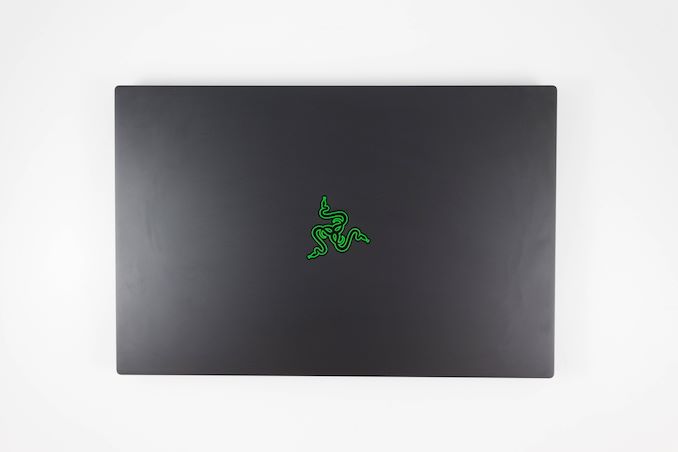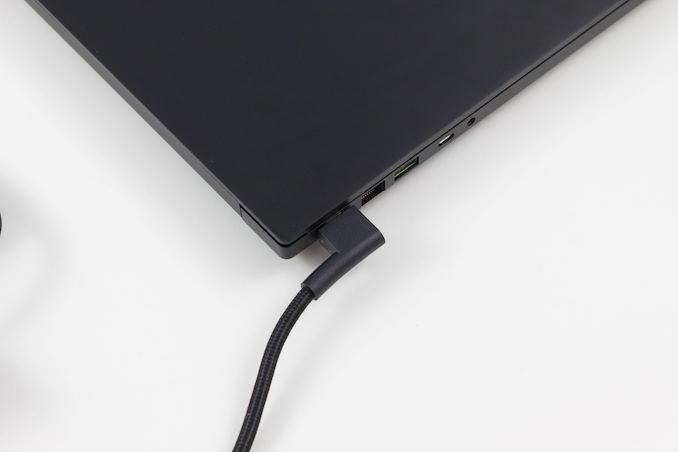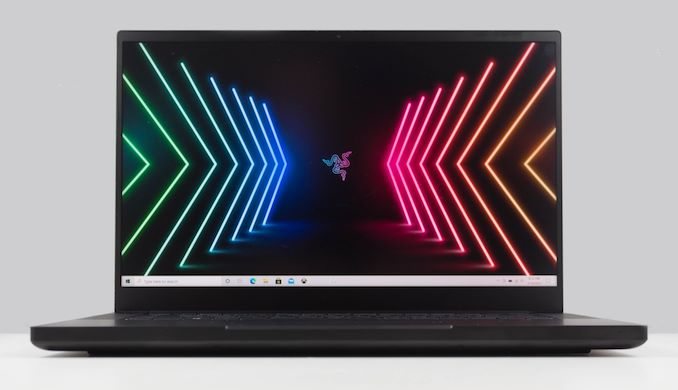The Razer Blade 15 (2021) Review: Amped Up With Ampere
by Brett Howse on March 11, 2021 9:30 AM EST- Posted in
- Laptops
- Gaming
- Razer
- Razer Blade
- Ampere
Final Thoughts
It has been a few generations since we’ve taken a look at a Razer Blade, and what once started as a single notebook for the peripheral company has become an entire lineup of devices, hitting various performance levels and price points, while all offering a unified vision and design.
The Razer Blade 15 is the successor to the original Razer Blade, which was a 14-inch notebook. As part of the move to thinner display bezels, Razer redesigned it to fit a 15-inch display in a chassis that was about the same size, and the new design feels fresh and modern. It does not lose its heritage though, and picking up the Razer Blade 15 brought back immediate memories of the original Razer Blade. The company has tweaked the design, but through and through, this is clearly a Razer laptop.
As with any market, there are various price levels, and with premium offerings you expect a refined experience, something where Razer definitely delivers. Although the fundamental look and feel of the Razer Blade 15 is not much different than the original Razer Blade, it is still a well-built, beautiful design, that seems like it is ageless. Razer’s CNC milled aluminum body is strong, feels great in the hand, and the green touches such as the backlit Razer logo on the lid all work well together. Razer occasionally offers choices other than the black anodized finish, and while that is not the case at the moment, hopefully they will offer some additional finishes in the future. The black looks great, but it is a real chore to keep clean.
A premium gaming laptop must also offer high-performance components under the hood, and Razer delivers here as well. Although Intel’s Comet Lake platform is definitely showing its age, the hex-core processor still delivers good performance. Intel has not yet released the 45-Watt Tiger Lake products, so for now, the 10th generation Intel Core is what is available. For gaming, the GPU is the primary focus, and Razer offers the entire range of RTX 30-Series laptop GPUs with the Razer Blade 15, with RTX 3060, 3070, and 3080 options. The RTX 3070 in the review unit was able to roughly match the (laptop) RTX 2080 from last year, with less power draw, and a cheaper price. And it's a good fit for the QHD display.
Razer’s display choices are vast as well, with high-refresh IPS models, as well as a UHD OLED option. The QHD model in the review unit offers P3 D65 gamut support, as well as a 165 Hz maximum refresh rate; and while the gamut is not ideal, Razer’s included ICC profile did do a reasonable job with accuracy in the wider gamut. It is hard to harp on companies that are trying to offer wide-gamut support, but Windows 10 just handles them very poorly, which is a real shame. Razer also only offers G-SYNC support (which is also required for Advanced Optimus) on just a single display panel. That is a shame, as G-SYNC is a great feature on any gaming notebook.
If the Razer Blade had a weakness, it would be battery life. Despite the laptop supporting NVIDIA Optimus, which allows the dGPU to be powered down when unneeded, the relatively small battery only provided about five hours of battery life. Several years ago, five hours out of a gaming system would be amazing, but it is definitely not enough to use this untethered for any significant amount of time. Most gaming laptops are still designed to be plugged in for the majority of their usage, and despite the Blade 15 being a relatively thin and light design, it still falls into that camp.
There is a lot to like with the Razer Blade, and there really always has been. It is still one of the nicest Windows laptops around, offering plenty of performance in a sleek and elegant design. Some gaming notebooks are very heavily styled, but Razer has always been much more subtle with the touches, and other than the Razer green logo and USB ports, the Blade 15 is very understated.
None of the Razer Blade 15 models are inexpensive, with the most basic model starting at $1700. There are far less expensive gaming notebooks, especially the Clevo rebrands, which may offer more performance per dollar. But as with any premium device, the other components are where the Razer Blade shines. The build. The styling. The looks. The Razer Blade 15 offers all of that, plus the performance of a RTX 30-Series. Who could ask for more?













44 Comments
View All Comments
Spunjji - Sunday, March 14, 2021 - link
Nice! Genuinely a solid choice for the task, too bad that it'll be great for games too 😁oRAirwolf - Friday, March 12, 2021 - link
I will never forget the time I was playing rainbow six with my friend and his razer blade started shooting sparks out the side of the laptop. After he sent it in for repairs, they wanted about $1,800 to fix it. Once again reaffirming my opinion that razer should be avoided at all costs. They just make junk computers and peripherals and have bad after sales support. At my recommendation, my friend got an Alienware gaming laptop and is extremely happy with it. He can also rest easy knowing that while Dell support sucks, it is still a hell of a lot better and most of the Taiwanese companies. He can also have a tech sent to his house to fix his laptop and can easily extend the warranty so he doesn't end up like he did with razer.Spunjji - Sunday, March 14, 2021 - link
I've not dealt with a single IT-related company with good support. Dell are, at least, consistent.Eric_WVGG - Friday, March 12, 2021 - link
and apparently quite the fingerprint magnet. Maybe wipe it off before taking photos next time?plsbugmenot - Saturday, March 13, 2021 - link
This is clearly an advertorial. It purposefully ignores the many and glaring flaws of the product and overstates the strengths. Razer has notorious unreliability and poor quality control, the GPUs inside are severely power limited, the CPUs are ancient technology and the battery life is ridiculously low. The screen and good looks are the saving graces but in a market where a competitor like ASUS offers similar quality screens, an equally good (or better) lighter magnesium construction, better performance and battery life at nearly only 65% of the price of a razer you'd have to have been paid to write this flurry of lies about this product. How low has Anandtech fallen, it also explains why Ian has started his own schtick, it's only a matter of time before he gets pressed to sell his integrity and when that happens I very much believe he'll leave. Shame on Ryan for letting this fluff garbage be published!!!Brett Howse - Saturday, March 13, 2021 - link
This was not sponsored by Razer but great try.Spunjji - Sunday, March 14, 2021 - link
It really isn't. Most of the criticisms I have of it (relative lack of detail in some areas, lack of appropriate comparison devices) are explicable by the general lack of notebook reviews done on this site. Advertorials don't need this many pages - and I certainly wasn't persuaded to buy anything 😅Spikke - Tuesday, April 20, 2021 - link
Not sure where you are looking, but you can get the 2020 base model Blade with the 2070 Max-Q for cheaper than the Zephyrus of similar specs. I just bought a Blade last week and was looking at the Zephyrus, but it was $400 more for comparable specs. The Blade was a hair under $1500 and the Zephyrus was over $1900.Ewout - Sunday, March 14, 2021 - link
What is the contrast ratio? When picture says 871 and the orther 1001;1. And what about this nits? I’ve seen some reviews say it’s about 330. Looking for a laptop to do some photo editing and gaming.Brett Howse - Sunday, March 14, 2021 - link
881:1 is at max brightness. The one at 200 nits was tested with the spectrophotometer and it is not accurate at low brightness levels due to the amount of noise which is why it's not referenced. Sorry for the confusion